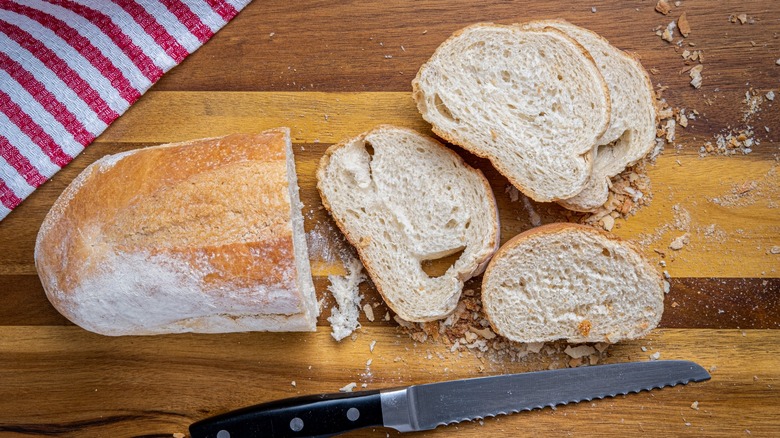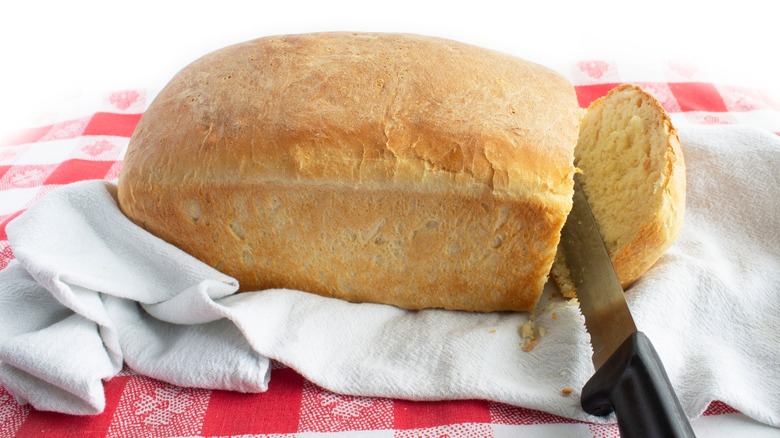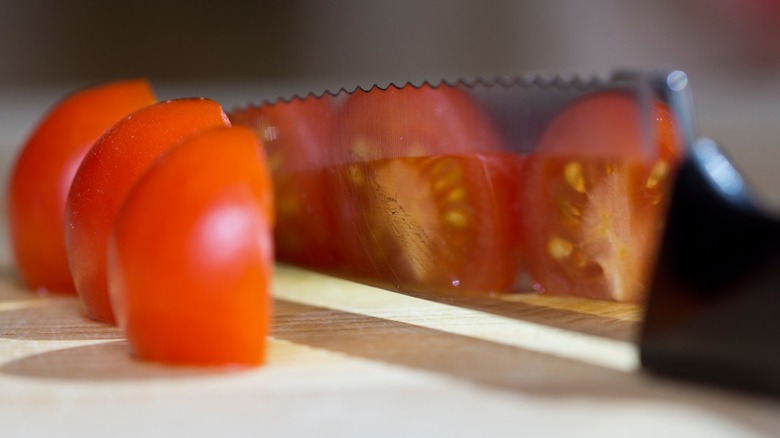Stop Slicing Bread With Anything But A Double-Serrated Knife
Anyone who has spent even just a little bit of time in the kitchen knows that choosing the right knife is essential for a smooth cooking experience, and anyone who has ever tried to use any old knife to slice into bread knows how deceptively tricky it can be. That's why serrated knives — the ones with those jagged edges – are your best bet for neatly cutting a loaf. However, these aren't entirely foolproof; all the subtle sawtooth notches can lead to an uneven cut, especially when unsharpened. For the absolute best bread-cutting experience, you may want to upgrade to a double-serrated knife.
Serrated knives work for bread so well because their sawtooth edges cut through crusts with ease all while leaving the interior intact. Trying to cut through bread with a standard chef's knife or anything else with a single, flat blade will only result in a mangled, squished slice. Cutting something with a serrated knife requires a back-and-forth motion like sawing a piece of wood, unlike other knives that are designed to cut in a single chop.
Why double-serrated?
If a serrated knife is the go-to tool for bread, why is it even necessary to upgrade to a double-serrated blade? Is it a marketing gimmick or do these extra-special types of knives actually work better? Well, the main benefit all comes down to longevity. You see, serrated knives may last longer than chef's knives because they're not constantly smacking the cutting board and only the tips of the teeth actually touch the wood. However, when these blades eventually wear out, it's significantly more difficult to sharpen them due to their inherent jaggedness. There are even some knife aficionados who say that there's no true way to sharpen your bread knife back to its former glory.
Double-serrated knives have an added layer of protection and will last longer than the five or six years that a standard serrated knife will. These upgrades are unsurprisingly more expensive, but the reasoning is that you're spending more money on something you won't have to replace as soon. Double-serrated knives also offer more precision, allowing for thinner cuts that will make you feel like you have more control over the loaf without having to cut larger slices into smaller slices.
Not just for bread, either
Serrated knives aren't just for bread, either. The sawtooth edges are ideal for anything that's firm on the outside but soft on the inside. After you've cut your bread slices to construct your sandwich, you can use the same knife to add some tomato slices to your lunch. You may be able to cleanly cut through a tomato using an incredibly sharp chef's knife, but why risk turning the inside into jelly? This also applies to citrus fruits or anything else with a firm outer casing and a soft interior.
You don't need to push very hard to make a serrated knife slice through anything, either. On the contrary, be gentle and let the edges do their job. With a steady and slow seesaw rhythm, you'll cut a fine slice fit for any decent sandwich. You might even find yourself upgrading to a double-serrated blade as soon as your regular bread knife runs out of steam so that you always have a trusty tool to use whenever there's a fresh loaf around.



